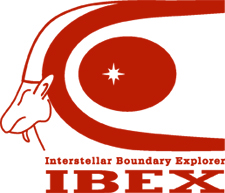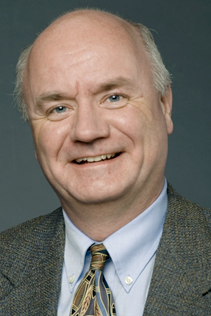Fall 2011
Earth Systems Research Center
Mike Palace received an honorary professorship from the UNH Class of 1941. The three-year professorship provides $7,000 per year to promote research and is awarded in recognition of "outstanding teaching, research, or public service, especially from an international perspective."
ESRC's Richard Lammers is principal investigator on a proposal entitled "Understanding the Consequences of Water-Use Decisions in a Dynamic Environment." The social and environmental factors that contribute to the resilience and vulnerability of Arctic communities are the focus of this project. Palace is co-investigator.
 |
Ruth Varner received funding from the National Science Foundation for The Northern Ecosystems Research for Undergraduates (NERU) program, which focuses on the impacts of climate change on ecosystems in Northern Sweden. NERU is a collaboration between UNH and the Abisko Scientific Research Station. Students will spend time at both institutions. Application deadline is December 1. For details visit http://neru.sr.unh.edu.
Jingfeng Xiao gave invited talks at Beijing Normal University, Institute of Geographical Sciences & Natural Resources at the Chinese Academy of Sciences, and at the 8th US-China Carbon Consortium (USCCC) Annual Meeting in China in late July.
The September 20th issue of Eos, Transactions, American Geophysical Union carried a cover story by Annette Schloss and collaborators detailing how mobile phone–based tools have the potential to revolutionize the way citizen scientists are recruited and retained, facilitating a new type of “connected” citizen scientist – one who collects scientifically relevant data as part of his or her daily routine. The work is being developed as part of a NASA Digital Earth Watch (DEW) grant to Schloss. DEW is part of NASA's education and public outreach program.
 |
|
| Dara Fedderson |
Dara Fedderson received first-place honors at the 10th International DeBeers Canada Award for Best Student Poster Presentation at the International Conference on Mercury as a Global Pollutant in Halifax in July. Her poster was titled "Analysis of Particulate Mercury in Marine and Continental Atmospheres, and was evaluated on the scientific merit, presenter ability, and presentation style.
 |
|
| Burakowski poster |
Liz Burakowski, a Ph.D. Candidate in the NRESS program, took 2nd Prize in the student poster competition at the National Science Foundation EPSCoR National Conference held in Couer d'Alene, Idaho October 24-27th. The poster describes her proposed dissertation research investigation the climate impacts of land cover change in the northeastern United States. Specifically, Burakowski is looking at how colonial-era deforestation affects surface albedo, or reflectivity, during the snow season. She hypothesizes that the deforested landscape of the late 1800s reflected more incoming solar radiation during the snow-covered months, making it cooler. As dark forest canopies regrew they shielded the highly reflective snow cover and absorbed more radiation that could be converted into heat and make the region warmer today than in 1870.
 |
Space Science Center
Dave McComas of Southwest Research Institute and the principal investigator for the IBEX mission presented awards to UNH mission team members Ken Fairchild, Pavel Dorovskoy, Roland Vanderspek, and Marty Quinn for their part in helping put the IBEX satellite into a new and unique orbit that will extend the two-year mission by a matter of decades. The maneuver placed the spacecraft into a lunar synchronous orbit – a long-term, stable orbit that no spacecraft has ever flown in before.
This eliminates the need to periodically burn a limited fuel supply to keep the spacecraft from eventually being pulled into Earth's atmosphere by the Moon's gravity, and will allow IBEX to continue its work through several solar cycles.
Says Nathan Schwadron, lead scientist for the IBEX Science Operations Center at UNH, "The team worked exceptionally hard to pull off a very challenging maneuver with very little time for preparation. Remarkably, the software worked almost flawlessly after the maneuver was completed."
 |
On October 25, EOS celebrated the fifth anniversary of the launch of NASA's Solar-Terrestrial Observatory (STEREO) mission, which carries onboard the UNH-built PLAsma and Supra-Thermal Ion Composition (PLASTIC) instrument. Toni Galvin is the principal investigator for the PLASTIC instrument, which measures characteristics of protons, alpha particles and heavy ions. STEREO has dramatically improved our understanding of the powerful solar eruptions that can send more than a billion tons of the Sun's outer atmosphere hurtling into space. STEREO team member Charlie Farrugia gave a short presentation detailing the mission's accomplishments.
Eberhard Möbius has moved for nine months to the Los Alamos National Laboratory (LANL) to work in collaboration with colleagues at LANL and expand his research on the interaction of the heliosphere with its galactic neighborhood. The research was made possible through the combination of a sabbatical leave from UNH and a grant from LANL.
Jim Ryan was one of only three finalists for this year's 2011 Homeland Security Award sponsored by the Christopher Columbus Fellowship Foundation and the helicopter company AgustaWestland North America. Ryan was invited to attend the October 11 ceremony in Washington, D.C. and was recognized for his work on developing methods and technologies to detect and measure cosmic rays, gamma rays and neutrons in space, with applications to identify various forms of radioactive material for homeland security (see story "A One-in-Ten-Thousand Chance Encounter" in this issue of Spheres).
 |
| Peter Bloser |
Peter Bloser was awarded $403,347 for three years from NASA's Solar and Heliospheric Physics program to develop a prototype of an advanced solar gamma-ray telescope using new scintillators read out by arrays of silicon photo-multipliers. The goal is to build a small prototype, test its performance in the lab, and then fly it on a balloon to test its performance in flight. Bloser notes that the recent GRAPE balloon flight (see lead story in this issue of Spheres) served as a preliminary engineering test of the silicon photomultipliers, which represent a new technology that may prove valuable for many NASA space applications.
Marc Lessard will give an invited talk on "Auroral Acceleration Processes" at the 11th International Conference on Substorms in Lüneburg, Germany September 2-7, 2012.
Ph.D. candidate Allison James was solicited to give an invited talk at the Inner Magnetosphere Coupling workshop at UCLA in March concerning her research on pulsating aurora, which she does with advisor Marc Lessard. Pulsating aurora is a common ionospheric phenomenon and as such offers a unique opportunity to study the source of the precipitating particle populations.
Graduate student Hyun Ju Connor received an outstanding student paper award from 2010 AGU Fall meeting with a poster titled " Dependence of cusp ion structures on a satellite orbit." The award was announced late last summer.
Ocean Process Analysis Laboratory
The September 27th issue of the American Geophysical Union's Eos carried a Research Spotlight feature on Joe Salisbury's work entitled "Refining the relationship between ocean color and salinity", which highlights a recently published JGR-Oceans paper entitled "Spatial and temporal coherence between Amazon River discharge, salinity, and light absorption by colored organic carbon in western tropical Atlantic surface waters." EOS colleagues Doug Vandemark, Janet Campell, Chris Hunt, and Dominik Wisser were co-authors. Rivers discharge massive quantities of fresh water to the oceans every year, changing surface salinities and altering ocean circulation patterns, yet even in the age of satellite sensors, ocean surface salinity detections have remained elusive. Salisbury and colleagues are exploring new techniques to estimate surface salinity from ocean color data and call into question the validity of assumptions relating ocean color to salinity. This work is also the first of its kind to use new microwave satellite salinity data to study a dynamic coastal environment.
Salisbury also reports he gave an invited synthesis talk on global coastal air-sea fluxes titled "Coastal CO2 fluxes: a survey, syntheses, feedbacks and issues" at the Joint SOLAS/IMBER/IOCCP Carbon synthesis meeting "The Ocean Carbon Cycle at a time of change: Synthesis and Vulnerabilities" in September at UNESCO headquarters in Paris, France.
 |
|
| Mimi Szeto | |
 |
|
| Amanda Hyde | |
 |
|
| Amanda Plagge |
Ph.D. student Mimi Szeto published a paper in the Journal of Geophysical Research entitled, "Are the world's oceans optically different?" OPAL research scientist Tim Moore and former OPAL director Janet Campbell are coauthors.
OPAL research scientist Chris Hunt published a paper in Biogeosciences entitled "Contribution of non-carbonate anions to total alkalinity and overestimation of pCO2 in New England and New Brunswick rivers."
Master's student Amanda Hyde represented EOS at the Oceans '11 MTS/IEEE meeting held Kona, Hawaii in September where she gave a talk discussing her analysis of new ocean CO2 observations collected in the Northeast Channel of the Gulf of Maine.
OPAL and NRESS Ph.D. candidate Amanda Plagge was awarded a renewal of her NASA Graduate Student Research Program grant to continue her research and internship with the Jet Propulsion Laboratory in the study of ocean satellite wind measurements.
Research Computing
In late September, the UNH Research Computing and Instrumentation Center (RCI) within Morse Hall held an open house and tour of the newly renovated William Lenharth Data Center. According to RCI director Patrick Messer, renovations include a comprehensive redesign of the power and cooling infrastructure for the computers supporting the research enterprise at UNH. "In-row cooling uses a hot-aisle/cold-aisle model to maximize the cooling efficiency of the air conditioning units saving energy and establishing a capacity to meet the increased demand of densely populated racks of computers and storage systems," Messer notes. Additionally, both the air conditioning units and the uninterruptible power supplies have redundancy to accommodate single failures without affecting "up time."
